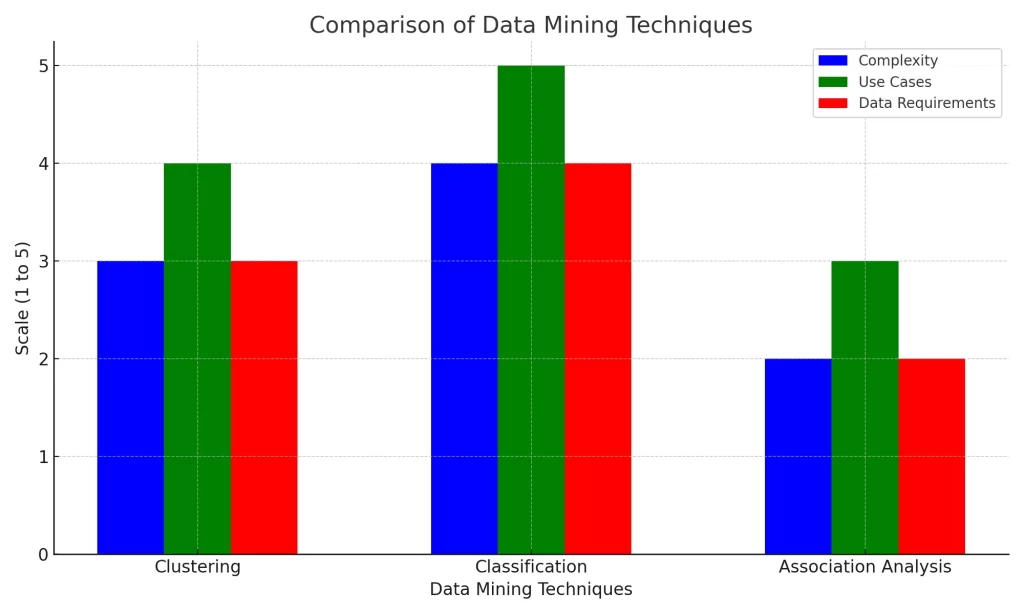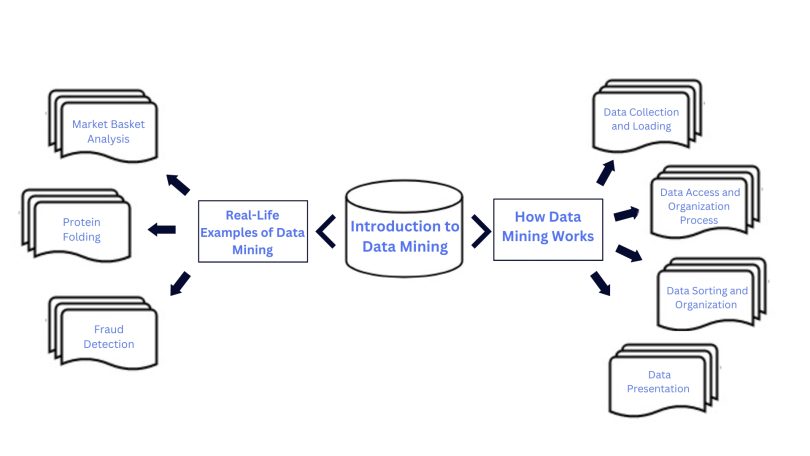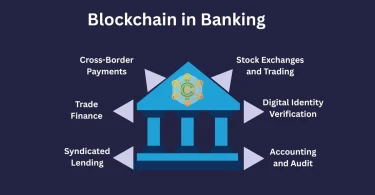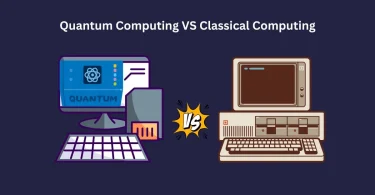The extracted information is used in the decision-making process, problem-solving in business, and discovering more business opportunities.
Foremost Application of Data Mining
Data mining can be characterized as an integration of ideas and methods from a number of fields including statistics, machine learning, pattern recognition, databases and data warehouse systems, information retrieval and visualization.
It helps in gaining more features of the data and to predict concealed patterns, future trends and behavior; helps the business organizations to take the right decisions.
It can be used on any kind of data, data warehouse, transactional, operational, multimedia, spatial, temporal, time series, WWW, etc.
Introduction to Data Mining
In Introduction of Data Mining Blog you will learn complete Detail .
How Data Mining Works
It is applied in many fields such as credit scoring, credit risk analysis, security threats detection, and spam mailers filtering; in market research to establish the sentiments or opinions of a certain group.
Process Comprises For Data Mining
This process comprises four essential steps…
Data Collection and Loading
Information is collected and is then moved to the data repositories which could be internal or data warehousing through cloud.
Data Access and Organization Process
The data is accessed by business analysts, management teams and IT professionals then they define the structure of the organization as per their requirement.
Data Sorting and Organization
Applications developed specifically for a particular business need categorizes and archive the data.
Data Presentation
The end user provide/formats or present the data in an understandable and shareable format like graph, table etc.
Comparison of Data Mining Techniques
in This bar chart comparing different data mining techniques (Clustering, Classification, and Association Analysis) based on their complexity, use cases, and data requirements

Real-Life Examples of Data Mining
Market Basket Analysis
This technique involves analyzing a customer’s purchase pattern in a supermarket to determine those products that are usually purchased together. For example, categorizing the likelihood of customers who buy bread to also buy butter. This analysis enables companies to use data mining in the marketing of specific products with offers and discounts.
Protein Folding
This technique uses biological cells to analyze and determine how proteins interact and what they do. Implementations include establishing causes and perhaps cures for diseases like Alzheimer’s, Parkinson’s, and cancer which are attributed to protein aggregation.
Fraud Detection
Data mining can also monitor activities done with cell phones to detect any abnormality for instance cloned phone calls. Similarly, in the case of credit card, analysis of the existing spend with the historical data can identify fraud where cards have been stolen.
Pros/Opportunities and Cons/Threats of Data Mining
Advantages
- This ensures that data is collected and analyzed in the right manner following a set procedure that defines the problems, looks for data then develops solutions. This improves a business’s revenue, productivity and capacity to carry out its activities
- It is useful for both new and existing applications of information systems. It can process any form of data and solve different business issues that require the use of numbers.
- Data mining’s ultimate objective is to find cohesiveness or relation in raw data sets. Thus, this capability enables firms to build value out of seemingly irrelevant information.
Disadvantages
- One of the major issues that has been identified is that data mining is not easy at all. It usually involves the use of special technical knowledge and software, which can be a challenge to small firms.
- It does not always mean that one will get the right results. Even when statistical analysis has been carried out appropriately, and the conclusions reached are potent, the changes made based on such data may not deliver the anticipated returns because the data may be misleading, the market may have evolved, the model may be faulty, or the wrong data people may have been applied.
- It has a high cost with large investment in data tools, high cost of acquiring data, and extra IT infrastructure to meet security and privacy issues. Data mining is usually data-intensive and this means that they must be large.
Data Mining and Social Media
The social networks include “Facebook”, “TikTok”, “Instagram” and “X”, along with data mining to collect massive data of the users based on their activities online. This data is then used to make assumptions about the user’s interests, accordingly allowing the advertisers to direct their messages to probable reactors.
Data mining in social media has received a lot of distress mainly because several investigative stories have shown how social media users’ data is mined. The main problem is that users willingly sign up for these platforms with their data and have little idea of what happens with this information and who buys it.
Final Summary
Data mining which used to be an exclusive tool for analysts has become a valuable resource for modern companies. The use of deeper artificial intelligence and machine learning will improve data mining and the discovery of even more profound patterns and trends at the core of the data. Further, development in data archive and computation ability will help in handling more extensive and heterogeneous data.
Privacy and ethical issues will also be very important in the future of data mining. Since data protection measures are still continuously strengthening, companies will have to develop complete mechanisms of data management and share data use policies. The promising direction of growth for data mining is in the generation of new ideas and added value. Data have become a strategic asset and a key to success in today’s complex and rapidly changing environment, where a smart use of analytics can bring many benefits.




Leave a Comment